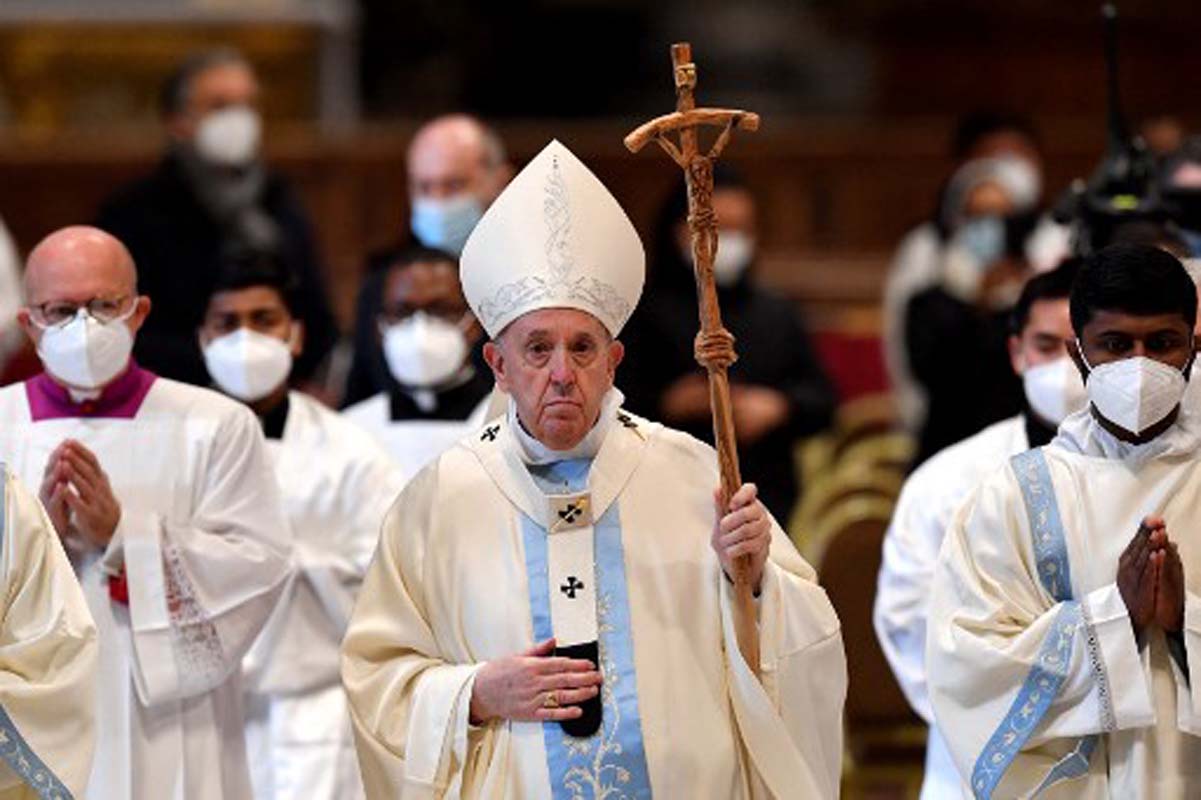
403
Sorry!!
Error! We're sorry, but the page you were looking for doesn't exist.
Vatican unveils reason of Pope Francis’s passing
(MENAFN) The Vatican has officially confirmed that Pope Francis passed away from a stroke followed by heart failure on Easter Monday at the age of 88. The Holy See reported that the pontiff died at 7:35 a.m. on April 21 at his residence in Casa Santa Marta within Vatican City.
According to Dr. Andrea Arcangeli, head of the Vatican’s Directorate of Health and Hygiene, the cause of death was “stroke, followed by a coma and irreversible cardiocirculatory collapse.” This was formally documented in the death certificate released Monday evening.
The Vatican also revealed that Pope Francis had been dealing with several chronic health conditions, including bilateral pneumonia, bronchiectasis, high blood pressure, and type 2 diabetes. He had recently spent 38 days in the hospital due to double pneumonia, during which doctors reportedly considered palliative care.
Despite his poor health, Francis made a final public appearance on Easter Sunday, April 20, greeting worshippers at St. Peter’s Square. Although too frail to deliver his traditional message, he stood from his wheelchair to wave to the crowd, offering a brief greeting: “Dear brothers and sisters, happy Easter.”
In his final spiritual testament, made public after his death, Pope Francis reflected on his approaching end and expressed a desire for a humble burial. “The suffering that marked the final part of my life, I offer to the Lord, for peace in the world and brotherhood among peoples,” he wrote. He requested a simple burial “in the ground” at the Basilica of Santa Maria Maggiore in Rome, rather than the customary entombment at St. Peter’s Basilica. His grave will carry only the inscription: Franciscus.
The Vatican announced that the Pope's body will lie in state at St. Peter’s Basilica starting Wednesday for public viewing. The College of Cardinals is expected to meet on Tuesday to set a date for the funeral, which traditionally occurs within four to six days of a pope's death.
Born Jorge Mario Bergoglio in Buenos Aires, Argentina, Francis became the first Jesuit and the first Latin American pope in March 2013. His 12-year papacy was defined by a commitment to humility, social justice, and interfaith outreach. He championed the rights of the poor, took strong stances on environmental issues, and pushed for reform within the Catholic Church.
According to Dr. Andrea Arcangeli, head of the Vatican’s Directorate of Health and Hygiene, the cause of death was “stroke, followed by a coma and irreversible cardiocirculatory collapse.” This was formally documented in the death certificate released Monday evening.
The Vatican also revealed that Pope Francis had been dealing with several chronic health conditions, including bilateral pneumonia, bronchiectasis, high blood pressure, and type 2 diabetes. He had recently spent 38 days in the hospital due to double pneumonia, during which doctors reportedly considered palliative care.
Despite his poor health, Francis made a final public appearance on Easter Sunday, April 20, greeting worshippers at St. Peter’s Square. Although too frail to deliver his traditional message, he stood from his wheelchair to wave to the crowd, offering a brief greeting: “Dear brothers and sisters, happy Easter.”
In his final spiritual testament, made public after his death, Pope Francis reflected on his approaching end and expressed a desire for a humble burial. “The suffering that marked the final part of my life, I offer to the Lord, for peace in the world and brotherhood among peoples,” he wrote. He requested a simple burial “in the ground” at the Basilica of Santa Maria Maggiore in Rome, rather than the customary entombment at St. Peter’s Basilica. His grave will carry only the inscription: Franciscus.
The Vatican announced that the Pope's body will lie in state at St. Peter’s Basilica starting Wednesday for public viewing. The College of Cardinals is expected to meet on Tuesday to set a date for the funeral, which traditionally occurs within four to six days of a pope's death.
Born Jorge Mario Bergoglio in Buenos Aires, Argentina, Francis became the first Jesuit and the first Latin American pope in March 2013. His 12-year papacy was defined by a commitment to humility, social justice, and interfaith outreach. He championed the rights of the poor, took strong stances on environmental issues, and pushed for reform within the Catholic Church.

Legal Disclaimer:
MENAFN provides the
information “as is” without warranty of any kind. We do not accept
any responsibility or liability for the accuracy, content, images,
videos, licenses, completeness, legality, or reliability of the information
contained in this article. If you have any complaints or copyright
issues related to this article, kindly contact the provider above.


















Comments
No comment